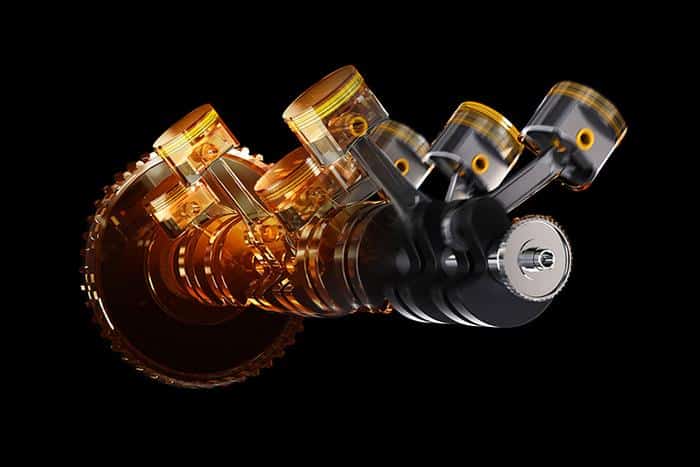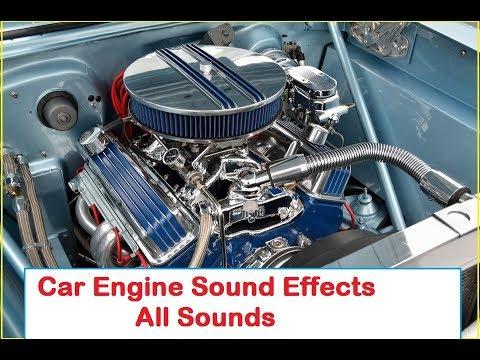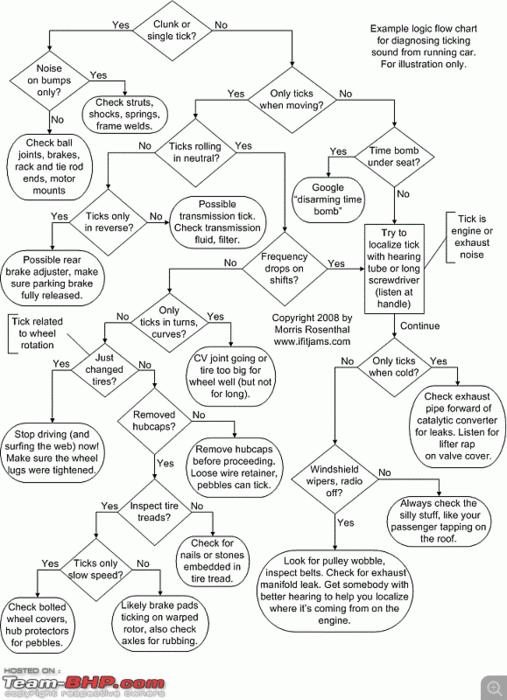Ever heard that soft, gentle rhythmic throb coming from your car and thought, ‘why does my vehicle sound like it’s purring?’ As an automotive enthusiast who’s spent a lifetime around cars, I’m no stranger to this uncanny noise. This is not your friendly neighborhood tabby – a car making strange sounds can signal issues that require prompt attention.
When your ‘car purring noise’ lulls you into a false sense of security, things might not be as smooth as they appear. In fact, over 36% of auto diagnostic sounds are misunderstood or ignored, leading to potentially serious mechanical problems down the road. But don’t fret just yet! I’m here to help you unravel this mystery and possibly save you from costly repairs.
So, fasten your seatbelts and hold on tight because we’re about to dive deep into what ‘purring’ under your car’s hood might mean. Armed with my lifelong experience, I’ll guide you through how to identify, decode, and troubleshoot these noises. Let’s ensure your ‘purring car’ continues purring for all the right reasons!
Identifying the Sound
Purring Sound at Idle

In my journey as ‘The Car Coach’, listening to the sounds a car makes at certain points is essential in understanding its health. Specifically, if your engine exhibits a purring sound at idle, it may be your car’s way of narrating a form of internal discomfort. This aspect forms a crucial part of identifying the sound, helping in early diagnosis and appropriate intervention.
Now, let’s delve deeper. Generally, an engine humming or purring sound at idle should send you into a state of alert. Engine idle purring sounds are not out of the ordinary if they are soft and consistent. It’s when the purring becomes notably louder, irregular or accompanied by other sounds that you have to pay more attention. It could mean a range of issues, from the mundane, such as the engine requiring oil, to more serious concerns like a failing component.
Over the years, I’ve learned that these seemingly mild noises, like a purring sound at idle, can often be early warning signs of bigger issues that may lead to expensive repairs if not dealt with promptly. Thus, attuned to these engine humming sounds is key in proactive car maintenance. Don’t ignore these purring whispers, they are your car’s language, and understanding them only helps ensure its longevity.
As we progress in our journey, we’ll be encompassing other types of noises as well. Different sounds allude to different issues, and it’s crucial to accurately decode them for effective troubleshooting. Stay tuned as we unravel sputtering and grinding noises in the subsequent section.
Sputtering and Grinding Noise

Moving on from the purring sounds, let’s focus our attention on some louder, more concerning noises – engine sputtering and grinding. It can feel intimidating when your car sounds like it’s come straight out of a horror movie, but understanding the causes and implications of these noises is crucial. Remember, we’re breaking down these sounds based on ‘where’ they originate.
Engine sputtering or grinding is typically a symptom of mechanical issues within your car. The former often indicates problems with the fuel system. This could result from an uneven supply of air and fuel to your engine, causing it to ‘sputter’. The grinding noise, on the other hand, can be traced back to the transmission or braking system. It’s often due to worn-out components rubbing against each other.
I cannot emphasize enough the importance of taking immediate action when these sounds surface. Ignoring these warning signs can lead to serious mechanical breakdowns that could sideline your vehicle for an extended period which, as anyone would agree, isn’t ideal. However, a diagnosis is tricky without proper expertise – that’s where specialists like myself come into play. We draw from years of automotive experience to correctly identify the root cause of these noises and suggest appropriate remedies.
Tackling unnerving engine sputtering and grinding noises is next in line after identifying the softer purring sounds. As we further navigate this auditory guide, we’ll delve deeper into decoding these sounds and deciphering their potential fixes. You’re gaining the skills to understand your car beyond what meets the eye – or in this case, the ear.
Decoding the Sound

I’ve been diving into the realm of ‘car noise diagnosis’ for several years, and in that time, I’ve unlocked elements of the automotive ‘language’. A ‘trusted analyst and consultant’, I have developed unique insights into the vast assortment of sounds that cars make. My hands have inspected a variety of engines, my ears have listened to countless car sounds, and my mind has deciphered what those sounds mean. Trust me when I say, there’s more than meets the eye with these complex machines – and ear!
What secrets could your car’s purring be trying to reveal? Let’s get into the heart of it, the engine. An engine houses myriad moving parts, each one contributing to the vehicle’s performance. A purring sound from your car may be benign, a mere characteristic of your machine. Though, it might also be an early warning sign of engine performance issues. Here, the key is to maintain an observant ear, and a keen discernment of sounds, changes and patterns.
In offering mechanic advice for engine noise, one must understand the different types of car engine symptoms. As an experienced consultant, I’ve learnt that these noises, such as your car’s purring, can oscillate between being a harmless idiosyncrasy to signaling a crucial maintenance requirement. From grossly obvious issues to subtle changes in rhythm, the language of your car is a complex dialect of knocks, clicks, hums, hisses, and yes- purrs.
Decoding these sounds requires careful listening and an in-depth understanding of the underlying mechanics, in addition to a genuine passion for cars. This analysis is motivated by more than just getting the job done- it is fueled by a pursuit of knowledge in the field. It’s about understanding the ‘whys’, being almost intimate with the operations of the engine, not just the ‘whats’.
Perhaps your car’s purr is originating from an old air filter begging to be replaced, a timing belt with a few too many miles on it or, possibly, a more serious internal component issue. Despite seeming like a daunting task to reckon with, remember, all of these potential issues can be resolved with timely action. Your car’s purring is less of an enigma when you’re armed with knowledge and advanced in your process of car engine repair.
Once you’ve identified your car’s purr, your focus should shift to understanding whether it’s normal or a cause for concern. Always remember, consistency is key for any car sound. If the purr is rhythmic and doesn’t change with acceleration, it’s typically nothing to worry about; inconsistencies or changes, however, should be met with caution and a prompt visit to your trusted mechanic.
In this chapter, we explored the art of listening and decoding the sounds of your car’s engine. As we delve deeper into this guide, our next focus will be on troubleshooting the sound. Trust the journey, as it is another step towards becoming an informed and confident car owner. Stay tuned for an interesting road ahead!
Troubleshooting the Sound

An uncanny sense of hearing is a pretty invaluable tool when it comes to troubleshooting car sounds. Often, I’ve found that the most jarring noises are often the least troubling, while the most peculiar sounds? Those are the ones you should be paying careful attention to.
Did you know that often the most peculiar car noises are actually the easiest to fix? While it may sound counterintuitive at first, my years of experience in the automotive field have led me to this realization. Allow me to guide you through this tricky realm of automotive repair tips, honed over a long career spent helping transform tinny, disturbing noises into the satisfying purrs of a well-tuned engine.
First things first, let’s remember that you’re trying to troubleshoot a purring sound – a soothing, rhythmic hum that’s less akin to a feline friend and more the signal of trouble brewing under the hood. If you hear that velvety thrum, it could point toward a number of issues which often can be simple fixes.
Time and again, my troubleshooting experience shows that one of the most straightforward fixes involves the serpentine belt. This long, snaking belt winds around multiple parts of your engine. Occasionally, wear and tear can lead to a slackening of the belt, causing a rhythmic ‘purring’ sound as it slaps lightly against the engine. Usually, a simple tightening or, in some cases, replacement of the belt, is all you need. That’s the charm of automotive repair – sometimes, it’s as elementary as tightening a literal loose end.
The skill of troubleshooting car sounds lies in understanding the language of your automobile. The vibrations and rhythms tell you a story – one that could point to anything from an easy belt fix to more insistent engine trouble.
If the purring continues post-belt repair, it’s time to turn your focus to the engine itself. This is where things get tricky and may demand a more in-depth understanding of car maintenance. Again, analogy is a powerful diagnostic tool here. An engine, like a human heart, depends on a series of perfectly synchronized operations, and just like our cardiac organ, if a piece goes awry, the rhythm goes off. A purring car engine could be signaling that
the idling speed is not synchronized correctly, or there’s a malfunctioning cylinder not doing its part. In these cases, a visit to a professional mechanic is often your best bet.
Attempting to navigate the cause of your vehicle’s troubles can be daunting, especially when they’re dressed in benign sounds like gentle purrs. However, armed with the right knowledge and techniques, you’ll become more than adept at troubleshooting those seemingly innocent noises.
Reflecting on my own experiences across the media industry, from reporting for Car Coach Reports to Inside Edition, I am filled with pride for the practical wisdom I’ve come to acquire. Every article, every car noise, and every solution led to this moment, where I can guide you through these odd symphonies of sounds. Just remember, every big problem often starts with a small sound.
Stay in touch with your car’s communication and keep your ears open to the stories they narrate about your car’s health – it’s these auditory insights that provide the next steps on your route to effective car maintenance.
FAQs
Why does my car sound like it’s purring?
What can go wrong if I ignore the purring sound from my car?
What steps can I take to troubleshoot the purring sound in my car?
Conclusion
So let’s summarize what we’ve learned about troubleshooting a purring car sound. By discerning the nuances of a car’s rhythm, listening closely to its purr, we can identify potential issues before they escalate. Worn belts or pulleys, oil malfunctions, or even alternator bearings, could be the culprits behind the symphony from your engine.
Car maintenance goes beyond washing and polishing; it involves appreciating the intricacies of your machine, breathing life into it. The way to ensure a smooth drive isn’t only straight highways, sometimes it’s identifying that quiet purr before it turns into a disruptive growl.
Are you ready to become a more informed and proactive car owner? Supporting this requires a little knowledge about car engine repair, and the confidence to tackle these minor roadblocks head on. It’s empowering to be able to address an unexpected purr, and to know where to direct your mechanic when the problem is more severe.
Sharing my passion for cars one day at a time has taught me that understanding your vehicle is key to a more fulfilling journey. Always remember, the cause of your car’s purring noise may be more than just a charming character trait, it can be a signal for attention. Click your seatbelt, turn on the ignition, and let your car tell its own story. Listen carefully.